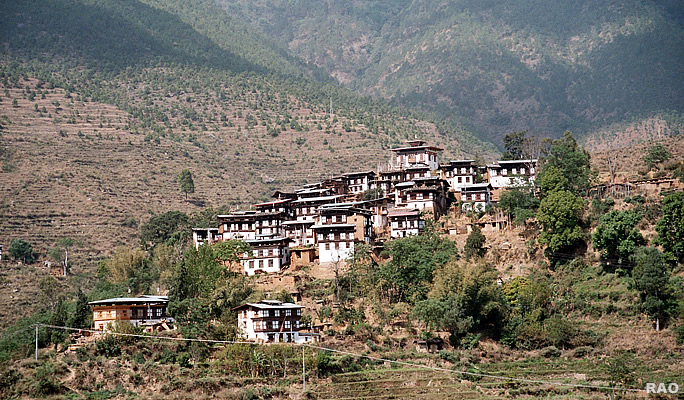|
Bhutan
- Ethnic Groups & People
|
 |
Bhutan's People Tourism |
|
 |
Bhutan Information |
|
|
 |
|
Rinchengang village
|

|
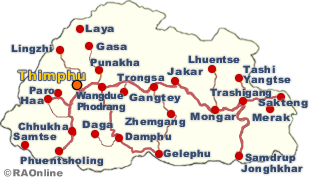 |
The first site that instantly rouses the curiosity of travellers driving down the Wangduephodrang town towards the bridge below is the cluster of old traditional mud-houses on the opposite hill facing the dzong.
The ancient look of the houses built on sliced hilltop baring a dusty orange-soil reminds travellers of the crowded mud houses in Morocco or a closer resemblance to one of those clustered towns etched against hills in Kabul, Afganistan. |
|
The mesmerising village known as Rinchengang, which is about 20-minute walk up a gentle gradient appears like a maze to a first time visitor with numerous narrow alleys leading up to numerous two storied traditional houses just inches away from each other.
About 47 households make up the village.
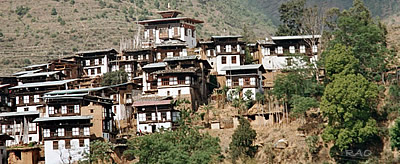 |
| Ask any Wangduephodrang town residents about the village and they instantly begin cracking jokes about the village.
"If you go and sell vegetable there, you will not know who bought them," a shopkeeper in Wangdue town said. |
|
That, a 67-year-old businessman from Sephu said was because many families in the village live in one house.
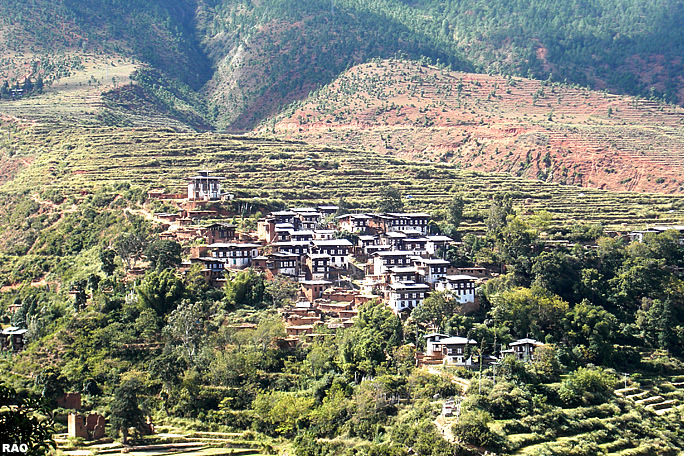
|
|
Rinchengang
|
Dema, 53, explained the reason for her two-storied house having four additional rooms and the slimmest space between her house and that of her neighbours'.
"There are four families living in my house and that means we have to attach just as many rooms," the mother of four said. About 36 people, including 20 children below 15 years live in her house.
Dema's neighbour, Zam for the same reason of having to accommodate extended family members had to also attach additional rooms. "That is why our village lacks the space to even walk between the houses," Zam said. She has about 16 people living with her.
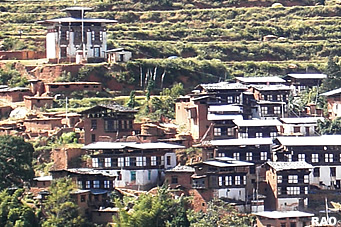 |
|
Rinchengang residents, who do not own any kamshings (dry land) or chimsa (land to construct houses), are forced to squeeze inside that little space.
Village tshogpa, Khandu, said about 87 census holders crammed inside 45 houses. "Most houses accommodated between two and three families," he said, adding the largest was six families. |
|
Khandu explained that when one of the village resident wanted to build a separate new house, he or she had to garner the consent and signed approval of all village residents.
"That is because the entire village only had about three acres and 30 decimal of land," he said.
One of the residents admitted it was difficult to live with so many people and so close together.
"With an army of children who are bound to quarrel over various issues, contention builds among families," Zam said.
Water shortage is a chronic problem with three or four households sharing a tap. "One family member has to keep fetching water, as it is not enough," Changsa, 67, said.
Lack of physical space also forced many households to share one toilet, which villagers said compromised on hygiene.
A former soldier, Kinley, fears the fate of the residents should there be a fire.
"All houses will be razed to the ground if one house catches fire," the father of five said. "Before such misfortune befalls us something ought to be done."
Residents, who also do not own much chuzhings (wet land), live as sharecroppers and buy vegetables from Wangdue town. "I wish we have some lands to grow vegetables," a mother of four said.
Sharing the same gung and thram also posed the residents other problems. Most Rinchengang residents, who applied for resettlement, were declined they were found to possess land under their thrams.
"People here share the same gung and thram, because of which we do not fulfill the resettlement requiement," Thedtso gup Namgay Wangchuk said.
Although the gewog was aware of the Rinchengang problem, the gup said, they could not do much as most government land in the locality is given as Punatsangchu land substitute.
| Contributed
by Tashi Dema , KUENSEL, Bhutan's National Newspaper, 2010 |
 |
top
| Information on Bhutan |
 |
|






